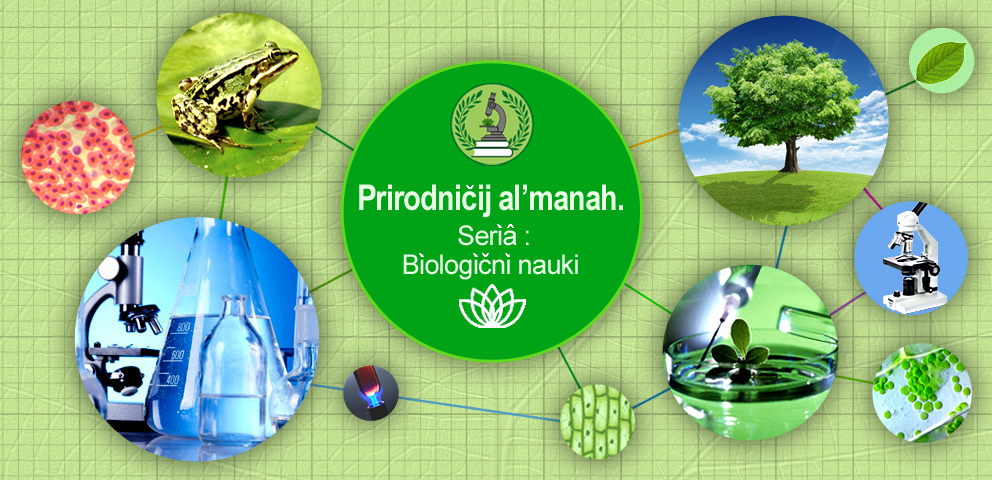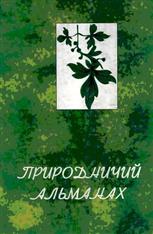CHIRONOMIDAE (INSECTA, DIPTERA) FAUNA OF LOWER DNIPRO. PART 1: SUBFAMILY TANYPODINAE
I. V. Shevchenko
Abstract
The work is the first part of a series of articles intended to comprehensively describe the current state of Chironomidae fauna of the Lower Dnipro on the basis of the long-term studies of larval forms of this group of Diptera insects, widely represented in water bodies of this estuary.
Based on the current research, the species composition of larvae of Diptera insects of the Tanypodinae (Diptera, Chironomidae) subfamily, represented in the benthic fauna of various water bodies of the Lower Dnipro, is described. The research was conducted on 18 water bodies, located in the delta and pre-delta areas of the Dnipro River. For the delta area, the following water bodies were researched: mainstream of the Dnipro River, the Viryovchina River, Kherson-Bilozerskyi floodplain area (the Koshova River, Lake Rohozuvate, Lake Bezmen, Lake Chychkuvate, Lake Stebliivskyi Liman), Kardashynskyi floodplain area (the Chaika River, the strait into Lake Kruhle, the Hadiuchka Strait, Lake Kruhle, Lake Kardashynskyi Liman), Velykyi Potyomkinskyi floodplain area (Lake Zakitne and Lake Nazarove-Pohorile) and Holoprystanskyi floodplain area (Lake Liahushache). For the pre-delta area, the mainstream of the Dnipro River, the Kozak River and Lake Sabetskyi Liman were researched. Based on the obtained data, a characteristic for each of the species of Tanypodinae is given, which includes: the distribution; the seasonality; indicators of quantitative development; the abiotic factors and the species of higher aquatic vegetation inherent in the places of detection of the larvae; the area. The mass and the less developed species of Tanypodinae subfamily and their distributional pattern in the water bodies have been determined. The indexes of occurrence in the benthic samples for the larvae of these species were determined. The comparisons of the indexes for individual water bodies, groups of water bodies (streaming system of the Dnipro River, the tributaries and the straits, the Viryovchina River, the pre-delta area, the delta floodplain areas) and for the water bodies as a whole, were made. The species composition of Tanypodinae larvae of anthropogenically polluted areas of the Lower Dnipro, in particular, its differences for the watercourses and lakes, were noted.
References
2. Баранов ВО. Попередній анотований список комарів-дзвінців (Diptera, Chironomidae) України. Українська ентомофауністика [Інтернет]. 2011 [цитовано 2020 жов. 15]; 2(1): 7-24. Доступно на: https://sites.google.com/site/ukrentfau/contents-1/contents-2010-ukrainska-entomofaunistyka/pdfs-of-papers/2_1_2_Baranov_UKRENTFAU2.pdf
3. Гільман ВЛ. Типові водойми пониззя Дніпра. Наукові читання присвячені 90-річчю Національної академії наук України. 2008; 1: 8-11.
4. Костяницын МН. Гидрология устьевой области Днепра и Ю. Буга. Москва: Гидрометеоиздат; 1964. 336 с.
5. Мінаєва ГМ, Коржов ЄІ. Фітопланктон антропогенно забрудненої річки. Природничий альманах. 2019; 26: 111-121. DOI: https://doi.org/10.32999/ksu2524-0838/2019-26-11
6. Мороз ТГ. Макрозообентос лиманов и низовьев рек Северо-Западного Причерноморья. Київ: Наукова думка; 1993. 188 с.
7. Оліварі ГА. Бентос дельти Дніпра. Пониззя Дніпра, його біологічні і гідрохімічні особливості. 1958; 34: 180-197
8. Цалолихин СЯ, редактор. Определитель пресноводных беспозвоночных России и сопредельных территорий. Т. 4. Двукрылые насекомые. Санкт-Петербург: Наука; 2000. 997 с.
9. Орлова-Гудім КС, Шевченко ІВ. Досвід використання гідробіологічних методів для моніторингових досліджень об’єктів природно-заповідного фонду. В: Моніторинг та охорона біорізноманіття в Україні: Тваринний світ. Матеріали Всеукраїнської науково-практичної конференції «Моніторинг та охорона біорізноманіття в Україні»; 2020 Бер. 27; Київ. Чернівці: Друк Арт, 2020. C. 158-162
10. Панкратова ВЯ. Личинки и куколки комаров подсемейств Podonominae и Tanypodinae фауны СССР (Diptera, Chironomidae = Tendipedidae). Ленинград: Наука; 1977. 154 с.
11. Романенко ВД, редактор. Методи гідроекологічних досліджень поверхневих вод. Київ: ЛОГОС; 2006. 408 с.
12. Самойлов ИВ. Устья рек. Москва: Географиздат; 1952. 525 с.
13. Тимченко ВМ, Алексенко ТЛ, редактори. Екологічний стан урбанізованих заплавних водойм. Стебліївський лиман. Херсон: Херсонська гідробіологічна станція НАН України; 2011. 48 с.
14. Шевченко ІВ. Личинки двокрилих комах у структурі макрозообентосу пониззя Дніпра. Природничий альманах. 2018; 25: 89-99.
15. Шевченко ІВ. Личинки роду Chaoborus (Insecta, Diptera) водойм та водотоків пониззя Дніпра. Природничий альманах. 2019; 26: 207-214. DOI: https://doi.org/10.32999/ksu2524-0838/2019-26-19
16. Шевченко ІВ. Рекомендації щодо визначення видового складу личинок двокрилих комах родини Chironomidae пониззя Дніпра. Наукові читання, присвячені Дню науки. Екологічні дослідження Дніпровсько-Бузького регіону. 2015; 8: 54-58.
17. Cranston P. Chiro Key [Інтернет]. 2010 [цитовано 2020 вер. 30]. Доступно на: http://chirokey.skullisland.info/
18. Korzhov YeI, Kucheriava AM. Peculiarities of External Water Exchange Impact on Hydrochemical Regime of the Floodland Water Bodies of the Lower Dnieper Section. Hydrobiological Journal. 2018; 54(6): 104-113. DOI: 10.1615/HydrobJ.v54.i6.90

